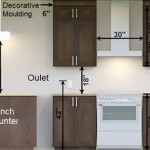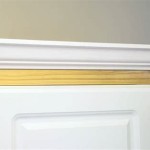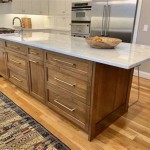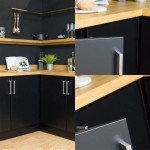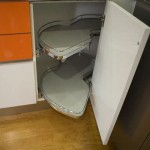What Color Cabinets For Grey Walls: A Comprehensive Guide
Grey walls have become a staple in modern interior design, offering a versatile backdrop that complements a wide array of styles, from minimalist to traditional. The neutrality of grey allows homeowners to express their personality through furniture, décor, and, significantly, cabinet color choices. Selecting the right cabinet colors for grey walls is crucial for achieving a cohesive and aesthetically pleasing space. This article explores various cabinet color options that work well with grey walls, providing insights into the nuances of color theory and design principles that influence these selections.
Understanding the Nuances of Grey
Before diving into specific cabinet colors, it's essential to understand the complexities inherent in the color grey itself. Grey is not a monolithic hue; it encompasses a vast spectrum of shades, each with its unique undertones. These undertones can significantly impact how a cabinet color will appear against a grey wall. For example, some greys lean towards warmer tones, exhibiting hints of yellow or brown. Others possess cooler undertones, incorporating elements of blue or green. Identifying the undertone of the grey wall is the first step in selecting complementary cabinet colors.
To accurately determine the undertone, compare the grey paint swatch against a pure white surface in natural light. This comparison will help reveal whether the grey skews warm or cool. Another helpful technique is to place the swatch alongside colors known to have specific undertones. For instance, comparing the grey swatch with a beige color can highlight any warm undertones, while comparing it with a light blue can reveal cool undertones. Once the undertone is identified, the selection of cabinet colors becomes more targeted and effective.
Furthermore, consider the light levels in the room. Grey can appear drastically different under varying lighting conditions. In rooms with ample natural light, grey may appear lighter and brighter, whereas in rooms with limited natural light, it can appear darker and more saturated. This consideration impacts the lightness or darkness of the cabinet color chosen. Generally, in darker rooms, lighter cabinet colors are preferred to reflect light and brighten the space.
Classic White Cabinets: A Timeless Choice
White cabinets are a perennial favorite and a safe bet when paired with grey walls. The clean, crisp appearance of white creates a bright and airy feel, contrasting beautifully with the neutrality of grey. White cabinets work particularly well with cooler grey tones, creating a sophisticated and minimalist aesthetic. However, the specific shade of white must be carefully considered.
Just as grey has undertones, so does white. White paints can range from warm, creamy whites to cool, stark whites. When pairing white cabinets with grey walls, ensure the white complements the grey's undertone. For warm greys, a creamy white with yellow undertones can create a harmonious and inviting space. For cool greys, a brighter, cooler white with minimal undertones will enhance the clean and modern look. Avoid pairing a warm white with a cool grey, as this can create a jarring and visually unappealing contrast.
The finish of the white cabinets also plays a role in the overall aesthetic. A glossy finish will reflect more light, making the space appear brighter, while a matte finish will absorb light, creating a softer and more subtle look. Consider the amount of natural light in the room and the desired overall atmosphere when choosing the cabinet finish.
Embracing Natural Wood Tones
Natural wood cabinets offer a warm and organic contrast to grey walls. The natural grain and texture of wood add depth and character to the space, creating a welcoming and comfortable atmosphere. The key to successfully pairing wood cabinets with grey walls lies in selecting the right wood species and stain color.
Lighter wood tones, such as maple or birch, work well with both warm and cool greys. These light woods provide a subtle contrast, adding warmth without overwhelming the space. Medium-toned woods, such as oak or cherry, offer a more pronounced contrast and can create a more traditional or rustic feel. Dark wood tones, such as walnut or mahogany, create a dramatic contrast and work best with lighter grey walls to avoid making the space feel too dark or heavy.
The stain color of the wood cabinets is equally important. Avoid overly warm or orange-toned stains, as these can clash with cooler greys. Opt for natural stains that enhance the inherent beauty of the wood grain or consider stains with neutral or slightly cool undertones. A clear sealant can also be used to preserve the natural color of the wood without adding any stain.
Adding Depth with Dark Colors
For a bolder and more dramatic look, consider incorporating dark-colored cabinets with grey walls. Dark colors, such as navy blue, deep green, or charcoal grey, can create a sophisticated and luxurious feel. However, it's crucial to use these colors judiciously to avoid making the space feel cramped or oppressive.
Navy blue cabinets are a popular choice for pairing with grey walls. The cool tones of navy blue complement cool greys, creating a calming and elegant atmosphere. When using navy blue cabinets, consider incorporating lighter elements, such as white countertops or backsplash, to break up the darkness and add visual interest.
Deep green cabinets offer a more earthy and organic feel. Green cabinets work well with both warm and cool greys, depending on the specific shade of green. A forest green cabinet can add a touch of nature to the space, while a more muted sage green can create a serene and tranquil atmosphere.
Charcoal grey cabinets create a monochromatic look that is both modern and sophisticated. When using charcoal grey cabinets, ensure there is sufficient contrast between the cabinet color and the wall color to avoid a flat and lifeless appearance. Consider using different textures and finishes to add depth and dimension to the space.
Exploring Colorful Cabinet Options
While neutral and natural tones are popular choices, colorful cabinets can add personality and vibrancy to a space with grey walls. The key is to choose colors that complement the grey and create a harmonious overall design. Consider the undertone of the grey and the desired mood when selecting colorful cabinet options.
Light blue cabinets can create a calming and serene atmosphere, particularly when paired with cool greys. Soft pastel blues evoke a sense of tranquility and work well in bathrooms or bedrooms. Brighter blues can add a pop of color to a kitchen or living room.
Yellow cabinets can add warmth and cheerfulness to a space, particularly when paired with warm greys. Muted yellows, such as mustard or ochre, create a more sophisticated and understated look. Brighter yellows can add a playful and energetic feel to a kitchen or dining room.
Green cabinets, as mentioned earlier, offer versatility and can work well with both warm and cool greys. Lighter greens, such as mint or sage, create a refreshing and airy feel. Deeper greens, such as emerald or forest green, add a touch of drama and sophistication.
Hardware and Accent Considerations
The choice of hardware and accents plays a significant role in the overall aesthetic of cabinets paired with grey walls. The hardware finish and style can either complement or contrast with the cabinet color and the overall design of the space.
For white cabinets, consider using brushed nickel or chrome hardware for a clean and modern look. For a more traditional feel, opt for antique brass or oil-rubbed bronze hardware. Black hardware can create a striking contrast and add a touch of drama.
For natural wood cabinets, consider using hardware that complements the wood tone and grain. Simple and understated hardware, such as brushed nickel or stainless steel, allows the natural beauty of the wood to shine through. For a more rustic feel, opt for cast iron or hammered copper hardware.
For dark-colored cabinets, consider using hardware that provides a subtle contrast and adds a touch of elegance. Brass or gold hardware can create a luxurious and sophisticated look. Silver or chrome hardware can add a modern and sleek feel.
In addition to hardware, consider the accent colors and materials used in the space. Countertops, backsplashes, and flooring should complement both the cabinet color and the grey walls. Natural stone countertops, such as granite or marble, can add a touch of luxury and sophistication. Tile backsplashes can add color and texture to the space. Wood flooring can add warmth and character.
Ultimately, the best cabinet color for grey walls depends on personal preference, the specific shade of grey, and the overall design aesthetic. By carefully considering the undertones of the grey wall, the desired mood of the space, and the complementary colors and materials, homeowners can create a cohesive and visually appealing design that reflects their individual style.

10 Cabinet Colors That Go With Gray Walls

Grey Kitchen Cabinets Inspiration

6 Kitchen Cabinet Colors That Go With Gray Walls Expert Guide

50 Gorgeous Gray Kitchens That Usher In Trendy Refinement

Most Popular Cabinet Paint Colors

The Perfect Shades Of Gray

What Color Goes With Gray Walls Perfect Cabinet Colors Cabinets Bay Llc

80 Home Design Ideas And Photos

What Wall Color Goes With Gray Kitchen Cabinets

What Wall Color Goes Best With Gray Kitchen Cabinet George Intl
Related Posts

